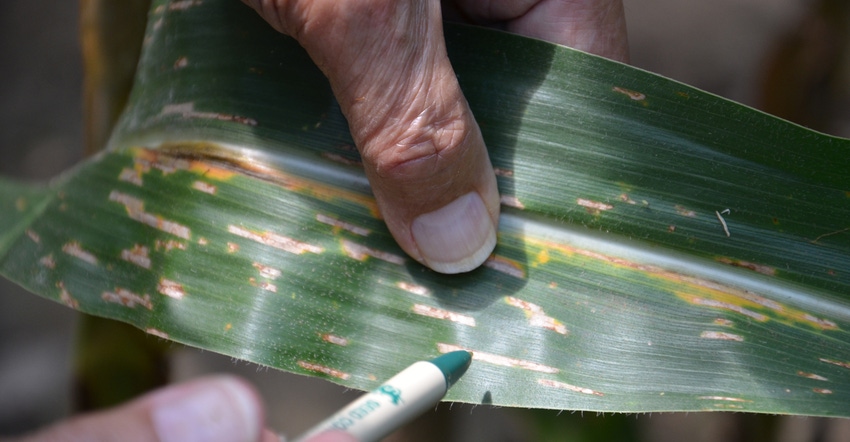June 29, 2020

Do you need foliar fungicides in 2020? It’s difficult to breed for genetic resistance to corn diseases. By the time breeders develop resistant hybrids, new mutations, or even new diseases such as tar spot, show up out of nowhere. Old disease organisms can mutate fast, and new diseases can blow in from other areas. You need to be proactive in scouting and ready to apply foliar fungicides to protect your crops.
There are several effective fungicides available that you might want to use if they’re cost-effective. Contact your chemical supplier, and be proactive in making reservations.
Hopefully, Mother Nature will be kinder this year and won’t favor disease organisms. However, generally a lot of inoculum from several diseases are on the ground, ready to attack if conditions are conducive.
Prepare now to defend crop
What steps should you take to defend a corn crop from pathogens? Plan on using foliar fungicides if needed. Last year, fungicides that were applied on time paid off. Some growers have reported that foliar fungicide applications after pollination was complete yielded 15 to 20 bushels per acre more compared to where no fungicides were used.
The ear leaf — the leaf attached to the topmost ear — is the largest and most important leaf on the corn plant. Be proactive in using foliar fungicides and protecting the ear leaf and all leaves above it. However, make sure fungicide spraying doesn’t interfere with the pollination process.
Different disease organisms become more prevalent in certain growing conditions. Northern corn leaf blight likes cooler temperatures, and gray leaf spot likes high humidity and high temperatures. Conservation tillage has increased the incidence of many diseases.
Some popular corn hybrids on the market have very high yield potential but are very susceptible to certain pathogens that increase the probability of disease development. These susceptible but otherwise high-yielding hybrids create more disease inoculum for the following year because they’re grown on many acres.
Try to identify and select more tolerant hybrids in seed company demonstration plots during the summer. Planting date and relative maturity of hybrids can also affect development of certain diseases. Earlier-maturity hybrids can sometimes escape a specific disease. These hybrids may be past the critical period before the disease becomes serious in the field.
Field-by-field decision
You may not have to apply fungicides to all hybrids, or even all fields planted on different dates. Some fields might escape disease. So, it’s very important to keep scouting during the pollination periods for leaf diseases.
The ideal time to apply fungicides on corn is after the ear leaf is fully developed. However, spray after the pollen shed period is complete and silks have turned brown. The goal is to protect leaves during the grain fill period.
Nanda is director of genetics for Seed Genetics Direct, Jeffersonville, Ohio. Email him at [email protected] or call 317-910-9876.
About the Author(s)
You May Also Like






